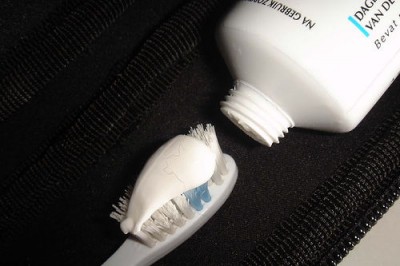Are Whitening Toothpastes Really Good For You?
Published:May 15th, 2010Many of us are now using teeth whitening products as a normal part of our dental hygiene. What was once the province of those who could afford the luxury of teeth whitening is an affordable part of daily grooming.
Toothpaste companies as familiar and affordable as Colgate, Arm & Hammer and Crest have started competing with higher priced toothpastes like Rembrandt in manufacturing teeth whitening products. The immense popular acceptance of teeth whitening as a daily activity in households across the UK has made it a hugely profitable business even if the claims made by these companies have not been scientifically researched or clinically proven.
Formulas that are used to produce a teeth whitening product from what used to be a normal toothpaste are the addition of two chemicals: carbamide peroxide or sodium tripolyphospate. The addition of one or the other chemical along with a rough agent like silica which can go by names like calcium carbonate or dicalcium phosphate is what turns a toothpaste into a teeth whitening product. In reality, it is the rough silica bits that act as an abrasive and make the product a teeth whitening agent.
The chemical agents like carbamide peroxide are actually meant to whiten teeth by being left on the teeth for a specified period of time. However, since tooth brushing doesn’t require a lengthy period of time, the bleaching agent really doesn’t have time enough to make much of a difference on teeth.
With teeth whitening toothpaste type products, what really removes stains and whitens teeth is the use of silica or silica type agents. The rought action of the silica scrapes off stains on the surface and users can actually look at a brighter teeth surface immediately after brushing their teeth.
Risks of Teeth Whitening Products in Toothpastes
Dentists are beginning to find that constant use of teeth whitening toothpastes are scraping off more than just stains, but might actually be making tooth enamel weaker. A weakening of tooth enamel can cause problems in teeth health by allowing plaque and bacteria to grow in weakened tooth enamel.
The first step in protecting your teeth from harm is to learn about the dangers of overly rough teeth whitening toothpastes.
A teeth whitening toothpaste should have an RDA number on the package. The RDA stands for “Relative Dentin Abrasity”. The American and British Dental Association considers an RDA of 250 and under to be the safest. The Federal Drug Association or FDA certifies abrasivity only in products that are under 200. If the teeth whitening toothpaste does not have a number, you can call the consumer number on the package to find out.
Here are some basic rules to follow to be sure that you are properly caring for your teeth along with frequent dental visits.
1. Take Turns- You can use a teeth whitening toothpaste a few times a month. Use your regular toothpaste daily to preserve your tooth enamel.
2. Use Teeth Whitening Toothpaste That Comes With the ADA Number – If your teeth whitening product has an ADA seal, it has been checked out by professional testers.
3. Buy a Fluoride Teeth Whitening Product – To help protect your teeth enamel, use a product that includes fluoride in its formula.
4. Don’t Over File Your Teeth- Especially if your teeth are sensitive, use low RDA formula teeth whiteners to proctect your tooth enamel.



Write a Comment of Are Whitening Toothpastes Really Good For You?